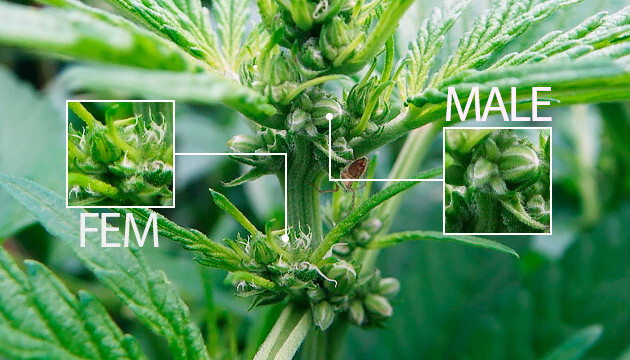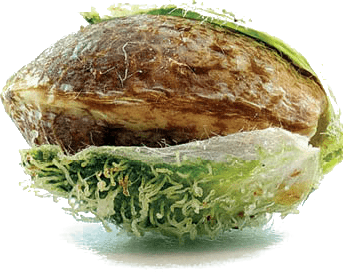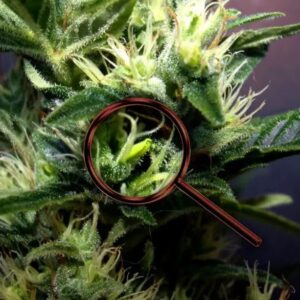The process to feminize seeds is an essential skill for growers who want to ensure a high yield of female plants. In this comprehensive guide, we will explore the various methods and techniques used to feminize seeds, the benefits of using feminized seeds, and the steps to successfully feminize cannabis seeds at home. Whether you’re a beginner or an experienced grower, this guide will provide you with the knowledge and tools to produce your own feminized seeds and create your own unique strains.
Understanding the Importance of Feminized Seeds
Before delving into the process of feminizing seeds, it is essential to understand the significance of feminized seeds in cannabis cultivation. Typically, cannabis plants have both male and female specimens, with the male plants producing pollen to fertilize the female plants. However, for growers who are primarily interested in cultivating bud-producing female plants, the presence of male plants can be undesirable as they can reduce the yield and quality of the final harvest.
Feminized seeds offer a solution to this problem. These seeds are specifically bred to produce only female plants, eliminating the risk of male plants and ensuring a higher success rate in growing bud-producing plants. By using feminized seeds, growers can maximize their space, improve the consistency of their yields, and focus on cultivating high-quality buds with higher levels of THC and CBD.
Methods to Feminize Seeds
There are several methods and techniques used to feminize cannabis seeds. Each method has its own advantages and considerations, and growers can choose the one that best suits their needs and resources. The three main methods discussed in this guide are:
- Rodelization Method: This natural technique leverages the plant’s survival instincts and involves allowing a female plant to remain in the flowering stage beyond its typical harvest time. This extended period induces stress in the plant, leading to the development of male pollen sacs. The mature pollen from these sacs can be used to pollinate other female plants and produce feminized seeds.
- Chemical Treatment Method: The Silver Thiosulfate (STS) technique is a popular and effective approach to feminizing cannabis seeds. This method involves treating female plants with a solution of silver thiosulfate, which modifies the plant’s ethylene levels and induces the development of male flowers. The pollen from these male flowers, which contains predominantly female genetics, can be used to pollinate other female plants and create feminized seeds.
- Colloidal Silver Method: Colloidal silver is a solution of pure silver particles suspended in distilled water. When applied to female plants, colloidal silver inhibits ethylene production, leading to the development of male pollen sacs. The pollen from these sacs, which carries female genetics, can be used to pollinate other female plants and produce feminized seeds.
1. The Rodelization Method to Feminize Seeds
The rodelization method is a natural technique that relies on the plant’s survival instincts to feminize cannabis seeds. Unlike the other methods, rodelization does not require any special chemicals or equipment, making it an appealing choice for organic growers. However, it is important to note that rodelization is considered less reliable compared to other methods and may not work for all cannabis strains.
Step 1: Select a Healthy Female Plant
To begin the rodelization process, choose a healthy female cannabis plant that is already 3-4 weeks into the flowering stage. Look for a plant with a good balance of leaves and buds, as this indicates its overall health and vigor.
Step 2: Extend the Flowering Stage
Unlike typical harvest times, the rodelization method involves allowing the female plant to remain in the flowering stage for an extended period. This extended flowering period induces stress in the plant, which can lead to the development of male pollen sacs.
Step 3: Monitor for Male Flower Development
As the plant endures the extended flowering period, it may begin to grow male pollen sacs or sex organs as a natural response to the stress of potentially not being pollinated. Monitor the plant closely for the development of these male flowers.
Step 4: Collect and Use the Pollen
When the male pollen sacs are mature enough, they can be harvested for pollen. This pollen, which genetically carries predominantly female traits, can then be used to pollinate other female plants. The resulting seeds are likely to be feminized and carry predominantly female genetics.
Step 5: Harvest the Seeds
After successful pollination, allow the plants to continue their growth cycle until the seeds are mature and ready to be harvested. Harvest the seeds carefully, ensuring that they are fully mature and have developed the desired characteristics.
It is important to note that the rodelization method has its drawbacks. Not all cannabis strains will naturally produce male characteristics when stressed, and there is a risk of encouraging hermaphroditic traits in future generations. Additionally, the amount of pollen produced may be significantly less than what is obtained from typical male plants. Despite these considerations, the rodelization method remains a popular choice for growers looking for a more natural approach to producing feminized seeds.
2. The Chemical Treatment Method to Feminize Seeds
The chemical treatment method, specifically using Silver Thiosulfate (STS), is a reliable and effective approach to feminizing cannabis seeds. Silver Thiosulfate (STS) is a complex formed by combining silver ions (Ag⁺) with thiosulfate ions (S₂O₃²⁻). The chemical formula for silver thiosulfate is often represented as [Ag(S₂O₃)₂]²⁻. The thiosulfate ligands (S₂O₃²⁻) play a crucial role in binding with silver ions, forming a stable complex. This compound is known for its ability to interfere with the ethylene hormone pathways in plants, leading to the development of male flowers on female plants. The specific mechanism involves the inhibition of ethylene action, promoting the production of male reproductive structures while maintaining the overall female genetic makeup. STS is utilized in plant biology and horticulture, particularly in the production of feminized seeds in crops like cannabis.
Step 1: Purchase STS Solution
The preparation of STS solution can be a complex chemical process. To simplify the process, it is recommended to purchase ready-made STS solutions from reputable sources. This ensures the correct concentration and composition of the solution, which is crucial for effective treatment.
Step 2: Safety First
Before applying the STS solution, it is important to prioritize safety. Ensure that you have protective gear such as gloves, safety glasses, and a face mask to prevent any potential harm. Remember that plants treated with STS are not fit for consumption and should be handled accordingly.
Step 3: Applying the STS Solution
Application of the STS solution requires precision and care. Use a spray bottle or mister to evenly and thoroughly spray the solution onto the bud sites of the female plant. Focus primarily on the nodes and bud sites where flower development is desired. The ideal time for the first application is just before transitioning the plant from the vegetative stage to the flowering stage.
Step 4: Pollination and Seed Harvesting
Once the female plant has been treated with the STS solution, it will start to develop male flowers or pollen sacs. These sacs contain pollen with predominantly female genetics. When the pollen sacs are mature and start to split open, carefully collect the pollen for future use. This pollen can then be used to pollinate other female plants, resulting in the production of feminized seeds.
Step 5: Post-Process Plant Management
After pollen collection, it is crucial to dispose of the treated female plant properly. Remember that plants treated with STS are not safe for consumption. Clean any equipment used during the process to prevent accidental contamination with STS.
Step 6: Start Breeding
The use of feminized pollen opens doors to creating your own cannabis strains by cross-pollinating different plants. This allows for the combination of desired traits and characteristics, leading to the development of unique and customized strains.
3. The Colloidal Silver Method to Feminize Seeds
Colloidal silver is a suspension of submicroscopic silver particles in distilled water. Represented as Ag⁰, these silver particles are typically in the nanometer size range. The colloidal silver solution inhibits ethylene production in female plants, prompting the development of male pollen sacs instead of female buds. This unique trait makes colloidal silver a valuable tool in cannabis cultivation for producing feminized seeds. The process involves careful application during the vegetative stage, leading to the formation of pollen sacs carrying predominantly female genetics. Colloidal silver is recognized for its role in modifying plant hormones and facilitating controlled pollination for seed production.
Step 1: Preparing for the Process
Choose a healthy and robust female cannabis plant as your “mother” plant. This plant should exhibit desirable traits and characteristics, as it will contribute to the genetic makeup of the feminized seeds.
Step 2: Application of Colloidal Silver
During the vegetative stage of the plant, apply the colloidal silver solution to the branches where bud development is desired. Ensure thorough coverage of the intended areas, using a concentration of at least 30 parts per million (PPM) for effective results.
Step 3: Development of Male Pollen Sacs
After regular application of colloidal silver, the female plant will begin to develop male pollen sacs. These sacs contain pollen with predominantly female genetics. When the sacs start to swell and the protective leaf section begins to crack, they are ready to be harvested.
Step 4: Pollen Harvesting and Usage
Carefully collect the mature pollen sacs and allow them to dry in a cool and dry place. Once dried, the pollen can be used to pollinate other female plants, resulting in the production of feminized seeds.
Step 5: Safety and Disposal
It is crucial to understand that any part of the plant treated with colloidal silver is not safe for consumption. After pollen collection, the treated plant should be discarded properly. Ensure thorough cleaning of any equipment used to prevent accidental contamination with colloidal silver.
Step 6: Pollination of Female Plants
Using the collected male pollen, pollinate a chosen female plant by isolating the desired plant or branch and applying the pollen. This can be done using a unused makeup brush, Q-tip or a similar tool. Allow the pollinated plant sufficient time to produce viable seeds, typically ranging from 3 to 6 weeks depending on the strain.
Best Practices for Feminizing Seeds
When feminizing seeds, it is essential to follow best practices to achieve the best possible results. Here are some tips to keep in mind:
- Method Selection: Choose a feminization method that aligns with your specific needs, experience level, and available resources. Whether opting for colloidal silver, rodelization, or another technique, tailor your approach accordingly.
- Equipment Quality: Invest in high-quality equipment with a focus on precision. Ensure your mixing tools allow you to combine ingredients accurately, maintaining proper proportions. Additionally, consider storage aspects – use dark containers to shield your mixture from light, thereby extending its shelf life.
- Methodical Adherence: Diligently follow the instructions for your chosen feminization method. Take the time to understand the intricacies of each step, ensuring a clear comprehension. When mixing ingredients, precision is paramount to successful feminization.
- Patience and Time Management: Recognize that feminizing seeds is a gradual process that demands patience. Allocate sufficient time and attention to each stage, particularly when combining ingredients. By storing your mixture in dark containers, you enhance its stability and contribute to the overall success of producing feminized seeds.
Conclusion
Feminizing cannabis seeds is a crucial step in cannabis cultivation for growers seeking to maximize their yields of bud-producing female plants. By understanding the various methods and techniques available, growers can successfully produce their own feminized seeds. Whether you opt for the rodelization method, chemical treatment method using Silver Thiosulfate, or the colloidal silver method, following best practices and ensuring proper safety measures will help you achieve the best possible results. Start feminizing seeds today and unlock the potential for a successful and rewarding cannabis cultivation experience.





